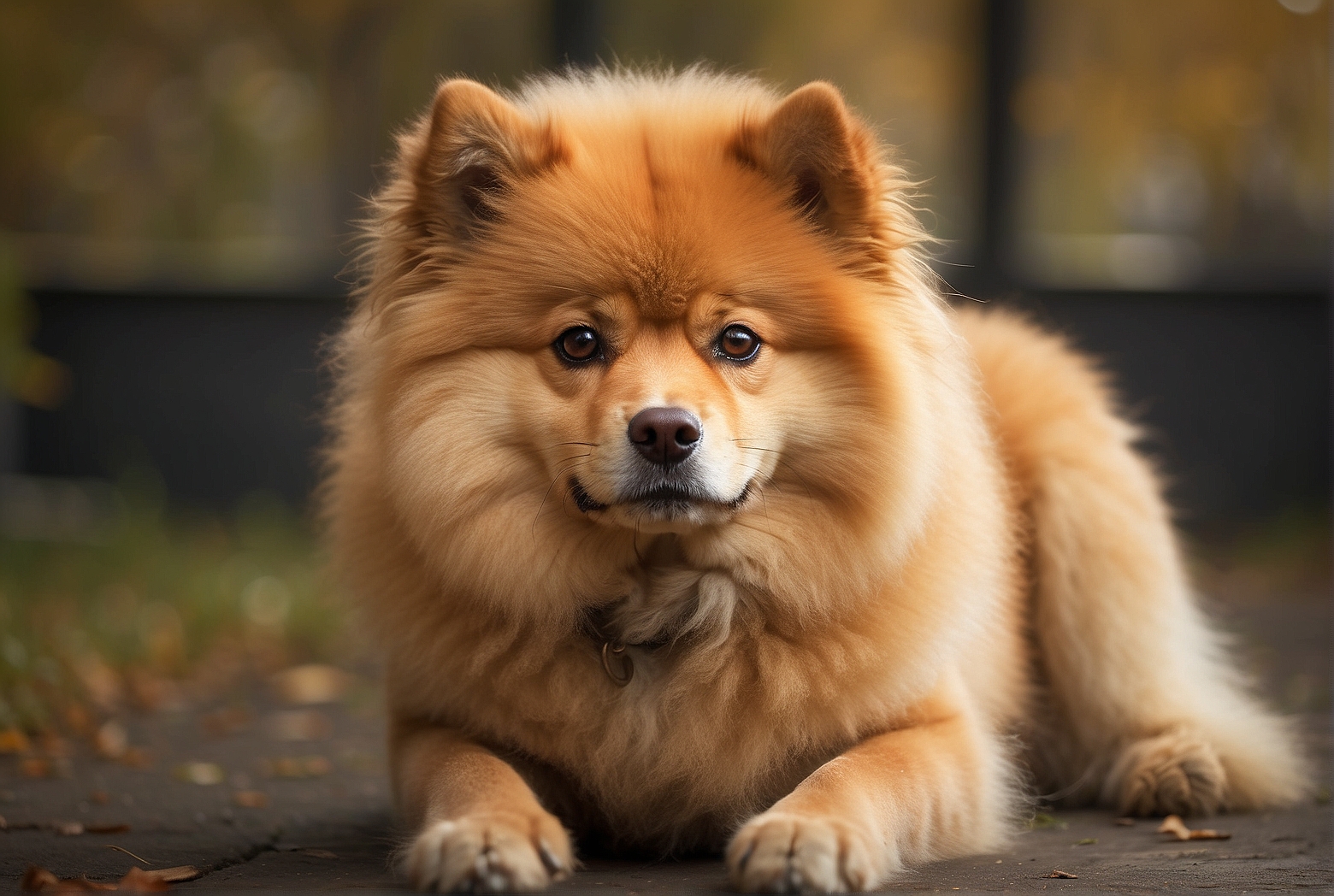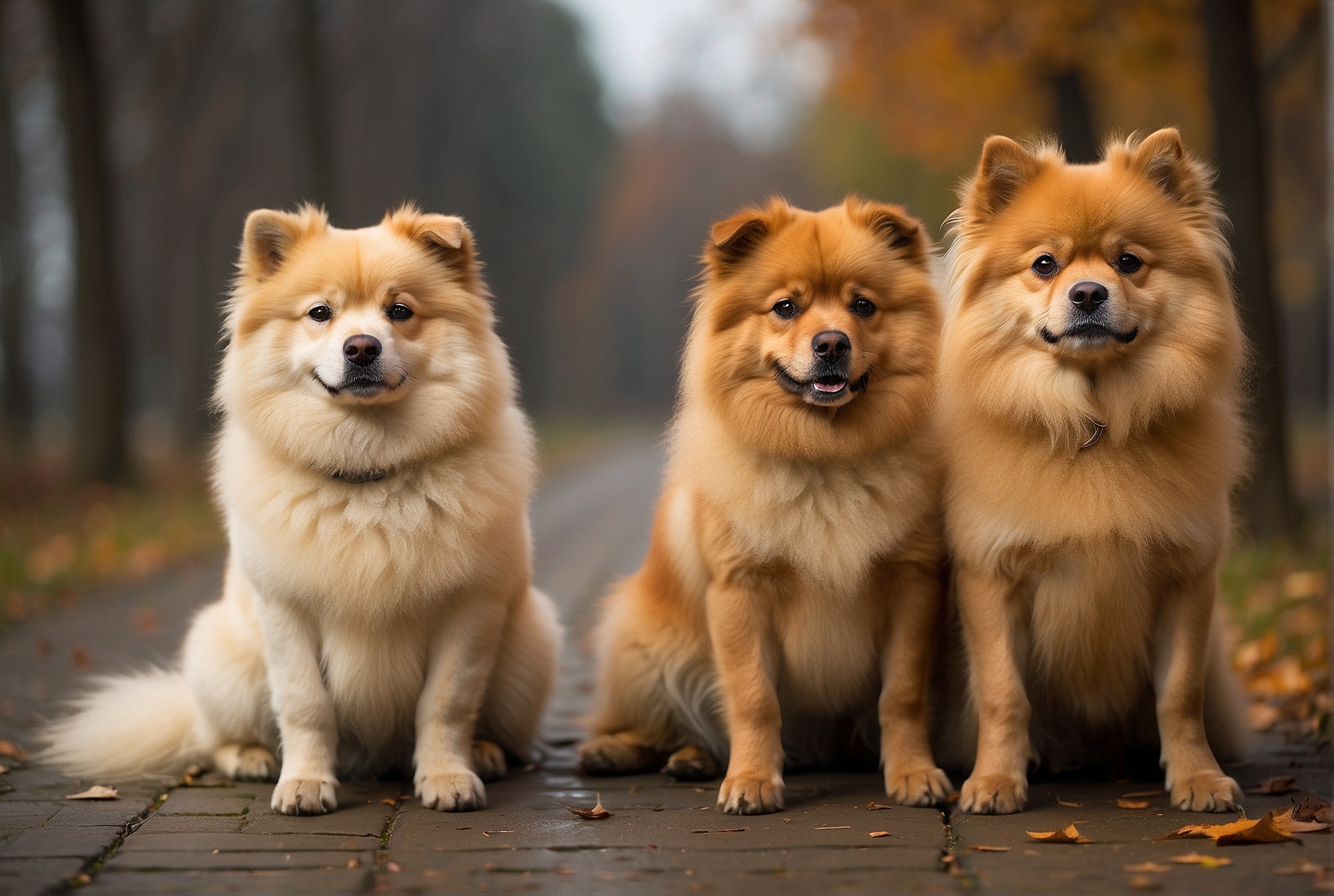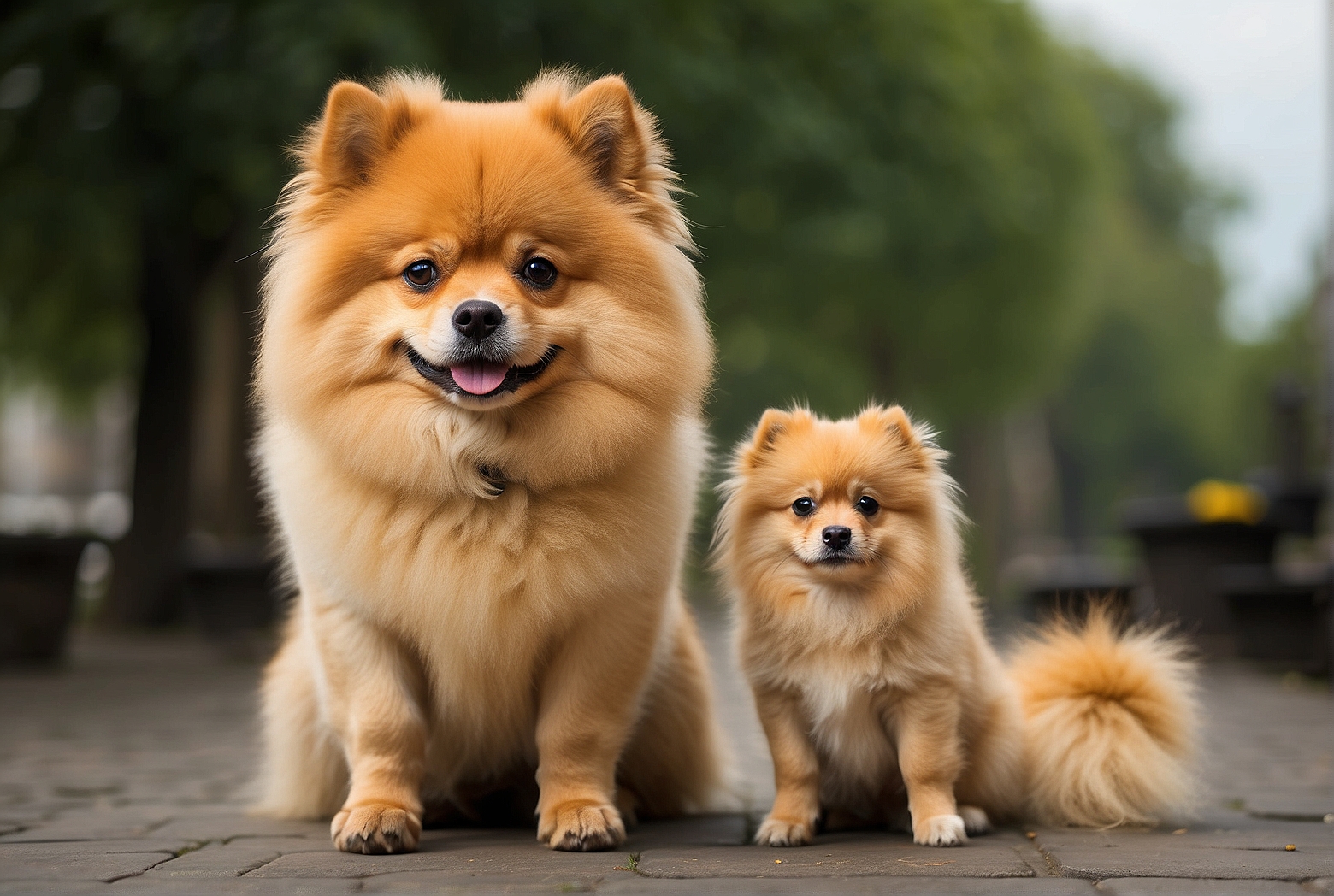Looking to add a strong and sturdy companion to your family? Look no further than our article on “Strong dog breeds compared to Pomeranians.” In this enlightening piece, we explore the characteristics and traits of various powerful dog breeds, including the mighty Great Dane. Discover which breeds pack a punch and exceed the strength of the lovable Pomeranian, as we delve into their physical prowess and overall demeanour. Get ready to explore a world of powerful pups, ready to join you on any adventure.
Introduction
Are you considering getting a new furry friend but can’t seem to decide between a small and adorable Pomeranian or a larger and stronger dog breed? Well, fret no more! In this comprehensive article, we will dive into the various aspects of size, strength, temperament, health, exercise requirements, working abilities, trainability, grooming, suitability for families, lifespan, and ownership responsibilities of both Pomeranians and strong dog breeds. By the end of this article, you’ll have a better understanding of what each type of dog brings to the table, allowing you to make an informed decision that suits your lifestyle and preferences. So, let’s jump right in!
Size and Strength
Comparison of Pomeranians and Strong Dog Breeds
When it comes to size, there’s no denying the stark contrast between a Pomeranian and a strong dog breed. Pomeranians typically weigh around 3-7 pounds and stand at a height of 6-7 inches. On the other hand, strong dog breeds can range anywhere from 60 to over 200 pounds, with heights varying between 20-30 inches or more. The sheer size and strength difference between these two types of dogs is evident.
Factors that Determine a Dog Breed’s Strength
Strength in dogs is influenced by various factors, including muscle mass, bone density, and overall physical structure. Strong dog breeds are typically characterized by a well-built muscular body, powerful jaw strength, and the ability to perform physically demanding tasks. These breeds often have a larger frame with ample strength to handle challenging physical endeavors.
How Size and Weight Contribute to a Dog’s Strength
In the realm of dogs, size and weight play a crucial role in determining strength. A larger and heavier dog possesses greater physical power, enabling them to exude more force and endurance. With their robust stature, muscular build, and heavier bone structure, strong dog breeds possess the necessary physical attributes to excel in agility, endurance, and tasks requiring strength.
Examples of Strong Dog Breeds
Some eminent examples of strong dog breeds include the Great Dane, Mastiff, Rottweiler, Saint Bernard, and the German Shepherd. These breeds are respected for their powerful presence, strong physique, and remarkable strength. Their imposing size and robust structure contribute to their reputation as formidable working dogs and loyal companions.

Temperament and Guarding Ability
Pomeranians’ Temperament and Guarding Abilities
Pomeranians are known for their lively and friendly temperament. They are often affectionate, intelligent, and social creatures that love being the center of attention. Due to their small size, Pomeranians may not possess the same level of physical strength as strong dog breeds, but their perpetual alertness and protective instincts make them excellent watchdogs. Their ability to quickly sound the alarm and their unwavering loyalty to their families make them efficient at alerting their owners to any potential danger.
Traits of Strong Dog Breeds in Terms of Temperament
Strong dog breeds, owing to their intended working purposes, often possess characteristics such as bravery, assertiveness, and confidence. They are renowned for their protective nature, making them highly effective as guard dogs. Strong breeds frequently demonstrate a keen ability to discern threats and protect their families and territory with unwavering vigilance.
Guarding Instincts and Capabilities in Strong Dog Breeds
Strong dog breeds have an innate guarding instinct that is deeply ingrained within their genetic makeup. This instinct allows them to detect and neutralize potential threats effectively. Their sheer size and strength further reinforce their guarding capabilities, making them excellent at deterrence and defense. When properly trained and socialized, strong dog breeds can provide an unparalleled sense of security and protection to their families.
Training and Development of Guarding Skills
To harness and nurture a strong dog breed’s guarding skills, early and consistent training is of paramount importance. A well-structured training program aimed at promoting obedience, socialization, and impulse control will aid in channeling their natural instincts effectively. With the guidance of a professional dog trainer, strong dog breeds can learn to employ their strength and guarding abilities in a controlled and discerning manner.
Health and Exercise Requirements
Pomeranians’ Health and Exercise Needs
Pomeranians are generally known for their good health and longevity compared to larger dog breeds. However, they may be prone to certain health issues such as dental problems, tracheal collapse, and luxating patella. Despite their small size, Pomeranians have moderate exercise requirements. Daily walks and playtime, combined with mental stimulation, are essential to keeping them happy and healthy. Due to their small stature, they can comfortably meet their exercise needs in smaller spaces, making them suitable for apartment living.
Common Health Issues in Strong Dog Breeds
Unfortunately, strong dog breeds may be prone to a range of health conditions related to their size and genetics. Hip and elbow dysplasia, bloat, heart conditions, and certain types of cancers are prevalent among larger dog breeds. Regular veterinary check-ups, a balanced diet, and proper exercise are crucial components of maintaining their overall health and well-being.

Exercise Requirements for Strong Dog Breeds
Strong dog breeds require substantial exercise to maintain their physical and mental health. Daily activities that involve rigorous physical exertion and mental stimulation are vital to prevent boredom, anxiety, and destructive behavior. Long walks, jogging, hiking, and engaging in other high-energy activities are highly recommended to meet the exercise needs of strong dog breeds. A spacious yard or access to open spaces is often advantageous for these breeds, allowing them to burn off energy and exert their strength.
Special Care and Considerations for Strong Breeds
Owners of strong dog breeds must be mindful of specific care requirements that come with their robust size. Proper nutrition is crucial to ensure healthy growth, weight management, and mitigate the risk of obesity, which could exacerbate health issues. Regular grooming, including nail trimming and dental care, is essential for maintaining their overall well-being. Additionally, providing them with mental stimulation through puzzle toys and interactive games can help keep their agile minds occupied.
Working and Sporting Abilities
Pomeranians’ Working and Sporting Abilities
Pomeranians, with their small size, were not originally bred for tasks requiring significant physical strength. However, they possess remarkable agility, intelligence, and trainability. These traits make them suitable for participating in dog sports such as obedience trials, agility courses, and tracking, where their keen minds and athleticism can shine.
Tasks and Jobs Performed by Strong Dog Breeds
Strong dog breeds have a rich history of performing essential tasks, often closely tied to their working origins. They have excelled in various fields including search and rescue, police and military work, therapy and assistance work, and herding livestock. Their physical strength, endurance, and unwavering dedication enable them to complete these demanding tasks with admirable efficiency and effectiveness.
Sports and Competitions Suitable for Strong Dog Breeds
Strong dog breeds excel in various sports and competitions that capitalize on their physical prowess and innate abilities. Sports such as weight pulling, dock diving, Schutzhund, and competitive obedience can showcase their remarkable strength, agility, and intelligence. Participating in these activities not only helps them stay fit but also fosters a strong bond between the dog and its owner.
Training and Development of Working Abilities
The training required to enhance the working abilities of strong dog breeds varies depending on the specific tasks or jobs they are expected to perform. Early and consistent socialization, exposure to various environments, obedience training, and targeted tasks training are all vital components of honing their working abilities. Patient and knowledgeable trainers work with their natural instincts and develop their skills to ensure optimal performance in their respective roles.
Trainability and Obedience
Pomeranians’ Trainability and Obedience Levels
Pomeranians are intelligent dogs known for their eager-to-please attitude, making them highly trainable. With positive reinforcement methods and consistent training, Pomeranians can quickly grasp commands and learn new tricks. However, they can also be strong-willed and may require firm yet gentle guidance to stay focused during training sessions.
Trainability and Obedience in Strong Dog Breeds
Strong dog breeds, just like Pomeranians, possess high trainability due to their inherent intelligence and ability to understand commands. However, it is crucial to note that strong dog breeds require consistent, positive, and reward-based training techniques to channel their strength and energy effectively. Establishing early and consistent training routines, socialization, and positive reinforcement are essential for their obedience and appropriate behavior.
Methods and Techniques for Training Strong Breeds
Due to their size and strength, training strong dog breeds requires a firm and confident approach. Positive reinforcement and reward-based training methods have proven to be highly effective in building a strong bond with these breeds. It is essential to focus on establishing trust, providing consistent guidance, and setting clear boundaries to ensure an obedient and well-behaved companion.
Challenges and Considerations in Training Strong Breeds
While strong dog breeds are intelligent and trainable, there are certain challenges associated with their training. Their size and strength can make them more difficult to control, especially without proper training and socialization. Strong dog breeds may also exhibit protective instincts that require careful management and responsible training techniques to prevent any potential aggression issues. Working with an experienced dog trainer, who understands the breed-specific traits and training requirements, can significantly enhance the training process.
Grooming and Maintenance
Pomeranians’ Grooming Requirements
Pomeranians have a thick double coat that requires regular grooming to keep it healthy and looking its best. Weekly brushing is necessary to prevent tangles, matting, and to remove loose hair. Occasional bathing, usually once every 1-2 months, is sufficient to keep their coat clean. Additionally, routine dental care, nail trimming, and ear cleaning are essential aspects of their grooming routine.
Grooming Needs for Strong Dog Breeds
Grooming strong dog breeds may entail unique considerations due to their size and specific coat type. Regular brushing, typically a few times a week, helps keep their coat healthy and free of tangles or matting. Bathing frequency may vary depending on the breed, but monthly baths are generally sufficient, unless they get particularly dirty. Additionally, periodic nail trimming, dental care, and ear cleaning are essential to maintain their overall cleanliness and health.
Managing Shedding and Coat Maintenance in Strong Breeds
Strong dog breeds, especially those with dense double coats, such as the Siberian Husky or the Alaskan Malamute, may shed heavily during certain seasons. It is crucial to stay on top of their shedding by regular brushing and using appropriate tools to help minimize the amount of loose hair in the household. Professional grooming services, such as deshedding treatments, can assist in managing their coat maintenance effectively.
Regular Care and Professional Grooming
Regular care, including grooming and hygiene, is necessary for both Pomeranians and strong dog breeds. While some owners prefer to groom their dogs at home, seeking professional grooming services can be particularly beneficial, especially for strong dog breeds with intricate grooming requirements. Professional groomers have the expertise and specialized tools to ensure the breed-specific grooming needs are met, resulting in a healthy and aesthetically pleasing appearance.
Suitability for Families and Allergies
Pomeranians’ Suitability for Families
Pomeranians are generally well-suited for families due to their small size, friendly temperament, and affectionate nature. Their love for attention and need for regular exercise make them great companions for families with children who understand how to interact with small dogs. However, it is essential to educate children and ensure they treat the Pomeranian with gentleness and respect.
Family-Friendly Traits in Strong Dog Breeds
Strong dog breeds can be excellent additions to families in search of loyal and protective companions. Their natural guarding instincts, when properly trained and socialized, can make them attentive protectors of children and family members. Many strong breeds are known for their patience, gentle nature, and fondness for children, making them fitting choices for families seeking a strong yet gentle-hearted canine companion.
Potential Allergies Associated with Strong Dog Breeds
While strong dog breeds may not be inherently more allergenic, people with allergies should be aware that certain dog breeds produce more allergenic substances such as dander and saliva. These substances can trigger allergic reactions in susceptible individuals. Before bringing a strong breed into a household with allergy-prone individuals, it is advisable to spend time with the specific breed and consult with a physician or allergist to assess the potential risks.
Considerations When Choosing a Strong Breed for Families
When choosing a strong breed for families, it is essential to consider factors such as the breed’s temperament, exercise needs, and compatibility with children. Strong breeds require responsible ownership, including consistent training, proper socialization, and adequate exercise to thrive in a family environment. Additionally, families with young children need to teach their children the appropriate way to interact with dogs, as any dog, regardless of size or strength, requires respectful treatment.
Differences in Lifespan
Pomeranians’ Average Lifespan
Pomeranians are generally long-lived dogs, with an average lifespan ranging from 12 to 16 years. With proper care, nutrition, regular exercise, and routine veterinary check-ups, Pomeranians have the potential to enjoy a healthy and fulfilling life well into their senior years.
Typical Lifespan of Strong Dog Breeds
Strong dog breeds, on average, have shorter lifespans compared to smaller breeds like Pomeranians. Many factors can influence their lifespan, including size, genetics, and specific health conditions associated with larger dogs. Generally, strong breeds may have an average lifespan ranging from 8 to 12 years.
Factors Influencing the Lifespan of Strong Breeds
Several factors can impact the lifespan of strong dog breeds. Genetics, responsible breeding practices, overall health management, diet, exercise, and access to regular veterinary care all play crucial roles in ensuring the longevity and well-being of these breeds. By addressing these factors, owners can help maximize the lifespan of their strong dog breeds.
Longevity Considerations for Potential Dog Owners
Potential dog owners should be aware of the potential differences in lifespan when considering Pomeranians versus strong dog breeds. While the lifespan of a dog is not the sole determinant of its suitability as a companion, it is an essential factor to consider. Owners must be prepared to provide the necessary care, attention, and resources to meet the lifespan-related needs of their chosen breed, as longer-lived dogs may require more extensive medical and health-related expenses in their senior years.
Ownership Responsibilities and Considerations
Responsibilities of Owning a Pomeranian
Owning a Pomeranian comes with specific responsibilities. Daily exercise to meet their energy needs, proper nutrition, regular grooming, dental care, routine veterinary check-ups, and socialization are all necessary aspects of responsible ownership. Additionally, providing a safe and enriching environment, training, and affectionate interaction are essential components of nurturing a happy and well-behaved Pomeranian.
Additional Responsibilities when Owning a Strong Breed
Owning a strong breed entails additional responsibilities due to their physical strength and unique needs. It is crucial to provide sufficient exercise and mental stimulation, as well as training and socialization opportunities from a young age. Proper containment, such as secure fencing or harnesses during walks, helps ensure their safety and the safety of others. Responsible ownership also includes providing a balanced diet, regular veterinary care, and maintaining good control and supervision at all times.
Resources and Support for Responsible Dog Ownership
Responsible dog ownership involves a commitment to ongoing education, staying informed about breed-specific needs, and utilizing available resources and support systems. Numerous online platforms, breed clubs, training centers, and local community groups provide valuable information and guidance for responsible dog ownership. Engaging with these resources can enhance the overall ownership experience and provide valuable insights into the specific needs of both Pomeranians and strong dog breeds.
Factors to Consider Before Choosing a Strong Breed
Before deciding to bring a strong breed into your home, there are several factors to consider. The size of your living space, availability of exercise areas, lifestyle, and the amount of time you can devote to training and care are all critical considerations. Strong dogs require committed owners who can provide them with the physical and mental stimulation they need to thrive. Understanding the responsibilities and unique requirements associated with strong breeds can help ensure a successful and fulfilling ownership experience.
In conclusion, the choice between a Pomeranian and a strong dog breed ultimately depends on your personal preferences, lifestyle, and commitment to responsible ownership. Pomeranians offer affection, loyalty, and excellent guarding abilities in a small package, while strong breeds provide strength, protection, and a formidable presence. By thoroughly considering the various aspects discussed in this article, you can confidently select the perfect companion that will bring joy and companionship to your life for many years to come.
